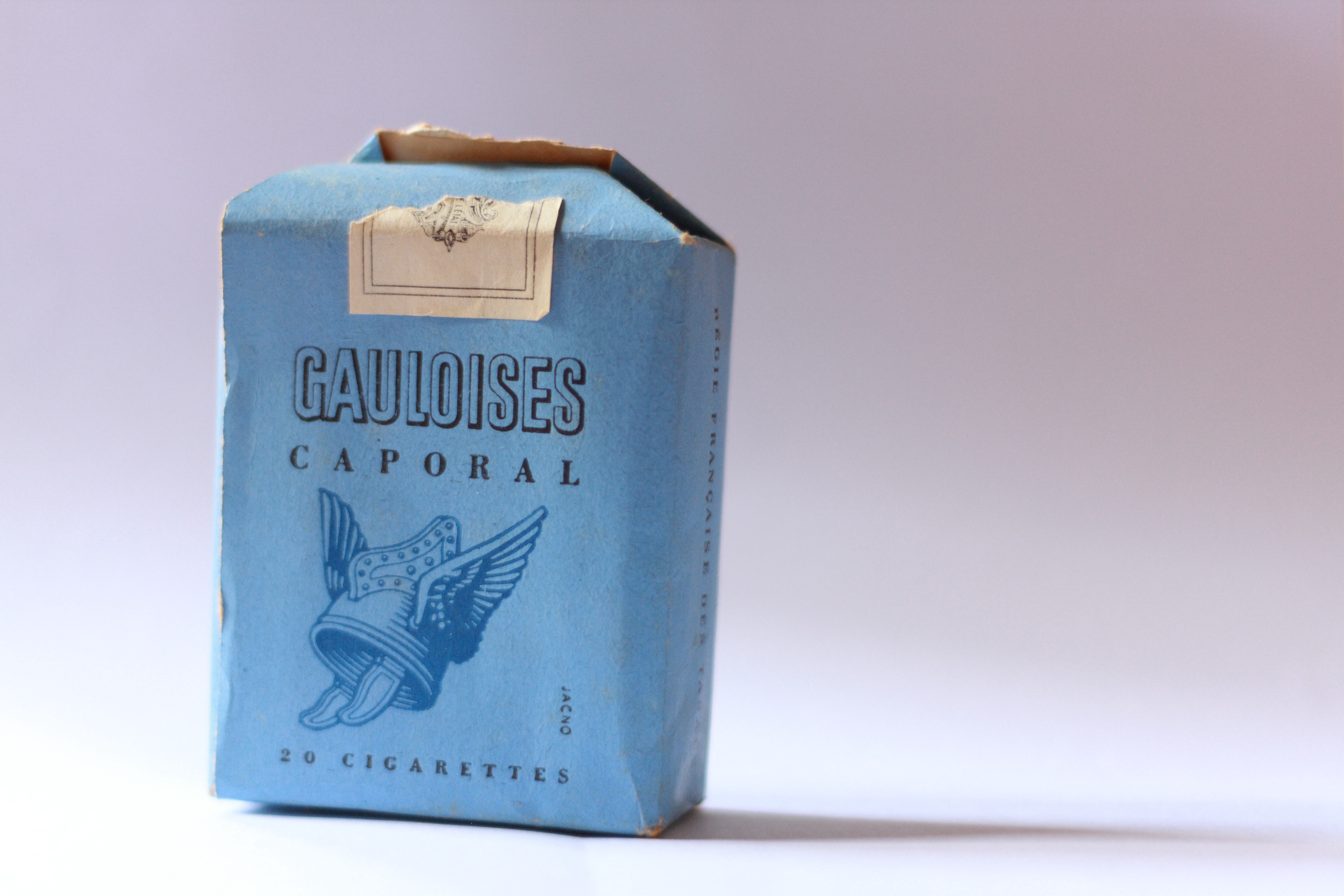How do two French cigarette brands become so cool that the government wants to outlaw them?
 Brigitte Bardot. Source: Juliana Dacoregio via Flickr
Brigitte Bardot. Source: Juliana Dacoregio via Flickr
Short, stubby and with an intense, distinctive smell: it?s easy to make unkind and stereotypical comparisons between French people and their iconic cigarettes. But Gitanes and Gauloises are subject to a prospective law in France which has smokers up in arms. This bizarre proposition, from an EU directive, aims to ban certain tobacco brands ? also including Marlboro and Lucky Strike ? for being too cool.
How did these two French brands become so cool that the government wants to outlaw them? Both were products of SEITA, the French state-owned tobacco company. They first appeared in 1910, but rose to popularity in the interwar period. Their strong patriotic imagery capitalised on a time of fierce national pride: the blue shade of the Gitanes packet is a typically ?French blue? (Gauloises introduced their ?Matisse blue? packaging in 1936). Gauloises, meaning ?Gaul women?, refers to the Iron Age civilisation which dominated much of Western Europe, including modern day France. Its logo is a Gaul military helmet, which reinforces its sense of national honour. That fact that many French Resistance soldiers smoked Gauloises further cemented its associations with patriotism. As does its slogan, ?Libert toujours?: Liberty forever.
Their real boom came in the ?Trente Glorieuses?, the thirty prosperous years after the Second World War. ?Smoking them now is really about nostalgia,? says Professor David Platten of the University of Leeds, who specialises in French popular culture. ?It?s retro-chic ? it relates to the postwar heyday, when we started to have spare money and more leisure time.? He continues: ?It was an era of optimism ? and we mustn?t forget that this was beginning of celebrity.? The mass media could now easily diffuse images of the French stars of the day, who were rarely photographed without a cigarette in hand. This would become the most powerful marketing tool for the industry.
There was a slight difference between the perception of the brands. ?Gauloises were always associated more with the working man,? explains Professor Platten, ?whilst Gitanes had slightly more stylish connotations.? Many public intellectuals would smoke Gitanes, including Jean-Paul Sartre, Albert Camus and Roland Barthes. In fact, these figures would make sure that they had a cigarette in hand in all their publicity shots.
?It was important that they were seen to be smoking,? says Dr Kathrin Yacavone, an expert in 20th Century intellectualism at the University of Nottingham. ?They wanted to convey a certain image ? the cigarette was a symbol for left wing liberalism and intellectualism.? This is another reason why the cigarettes became iconographic. ?Someone like Sartre was not just interested in philosophy. He was engaged politically, too,? remarks Dr Yacavone. Which is not to say that the right wing didn?t smoke ? they most definitely did ? but the trendy thinkers at the time, who could influence the youth of France, were on the left.
 Gitanes advert. Source: Val H via Picasa
Gitanes advert. Source: Val H via Picasa
The feminine imagery of both products should not be overlooked, and is no accident. The logo of a ?Gitane? (Gypsy woman) in silhouette is iconic. You may think that the soldierly associations of Gauloises automatically present it as masculine. But, as Dr Yacavone reminds us, ?one of the most important figures in French military figures is a woman in Jeanne d?Arc [Joan of Arc]. This means that the military doesn?t necessarily have the same masculine connotations in France as it does in other countries.? Furthermore, she continues, ?the word ?cigarette? in French is feminine, which means it would automatically influence how it is perceived.?
The femininity may explain why the cigarettes were popular among women, too. Before the 1950s, women would rarely be seen smoking cigarettes without a holder. This changed with the likes of Brigitte Bardot. ?Actresses also smoked ? it was seen as sexy,? says Dr Yacavone. She compares the advertising for Gitanes, which frequently featured women, to the American Marlboro Man. ?Smoking in the U.S. discourse is mostly masculine and mostly working class.? That was not the case in France.
 Serge Gainsbourg. Source: Gwendal Uguen via Flickr
Serge Gainsbourg. Source: Gwendal Uguen via Flickr
As the world periodically looked to Paris as a pioneer in style, it adopted Gitanes and Gauloises as a symbol of chic. George Orwell wrote about buying Gauloises in Down and Out in Paris and London. Jim Morrison and David Bowie were fans. Influential guitarist J.J. Cale paid homage to the Gitanes logo on his 1981 album Shades. John Lennon reportedly smoked Gauloises in order to deepen his voice. Ex-Guns ?n? Roses guitarist Slash has the dancing Gitane silhouette tattooed between his shoulder blades. And notorious chain smoker Serge Gainsbourg, who reportedly got through five packets a day, described his life as ?an equilateral triangle, shall we say, of Gitanes, alcoholism and girls ? and I didn?t say isosceles, I said equilateral.? Sylvie Simmon?s biography of Gainsbourg was appropriately titled A Fistful of Gitanes.
Although the American brands became more popular from the 1980s onwards, these two French products are still wrapped up in cultural significance. They are intrinsically intertwined with French politics, art and intellectualism. Which is why there is such resistance to their proposed ban ? they may not be as ubiquitous as they once were, but they are still as valuable in the national psyche. Whatever the outcome of this conflict between national health and nostalgia, those stubby white cigarettes will always have a place in the heart, and lungs, of popular culture.
 Gauloises. Source: Igor Maynaud via Flickr
Gauloises. Source: Igor Maynaud via Flickr


